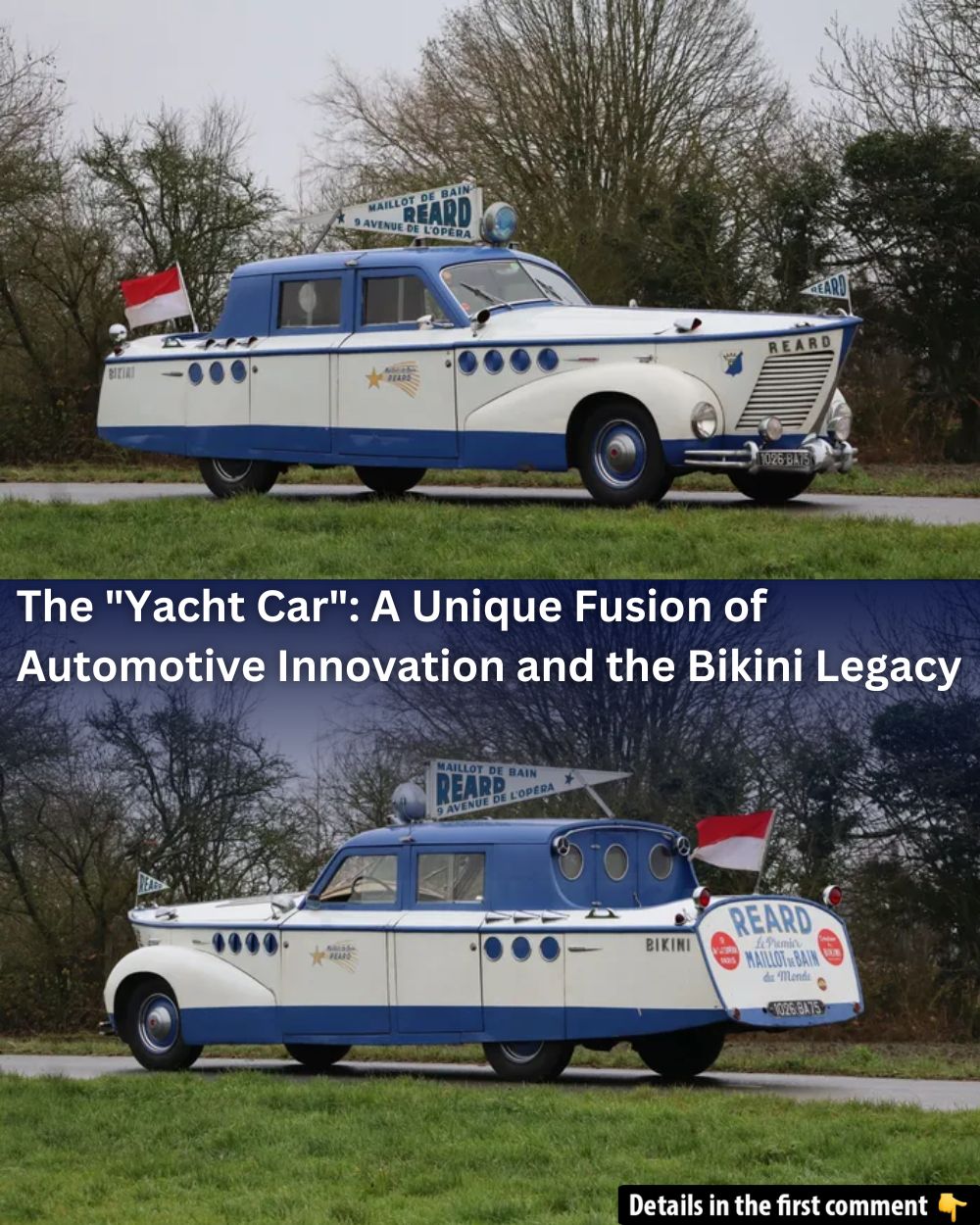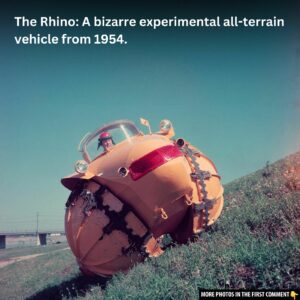In the world of vintage cars, some models stand out not just for their engineering brilliance or aesthetic appeal but for the stories behind them. One such remarkable vehicle is the “Yacht Car,” a 1937 Packard Super Eight that was transformed into a unique road-going yacht by the inventor of the bikini, Louis Réard. This vehicle, a one-of-a-kind creation, is a testament to the blending of innovation, luxury, and an iconic piece of fashion history. From its extravagant design to its promotional role in the post-war era, the Yacht Car remains a captivating symbol of 20th-century design and culture.
The Vision Behind the Creation
Louis Réard, widely recognized for inventing the bikini in 1946, had an eye for the unconventional. Following the success of his creation, Réard sought a way to further promote the bikini as a symbol of freedom and modernity.

The idea for the “Yacht Car” was born—a vehicle that could bridge the world of the beach with that of the automobile, a combination of two symbols of freedom and style. In 1947, Réard entrusted renowned French coachbuilder Henri Chapron to bring this vision to life, and the result was a striking road yacht that took to the French roads in the late 1940s and 1950s.
Video
Watch this video to explore the 1937 Packard Super Eight ‘Yacht’ by Chapron, featured by Artcurial at Retromobile, with an estimated value of €250k-€350k!
Designing the Unconventional Road Yacht

The Yacht Car was not just a car; it was an automotive art piece. Originally intended to be built on the chassis of a Delage D8-15, the project was eventually moved to a more fitting platform—the 1937 Packard Super Eight. The decision to use the Packard chassis was motivated by the vehicle’s powerful 8-cylinder engine, capable of supporting the imposing size and luxurious bodywork Réard envisioned.
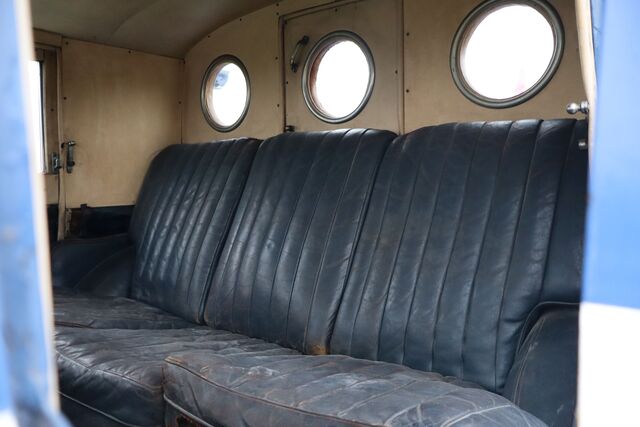
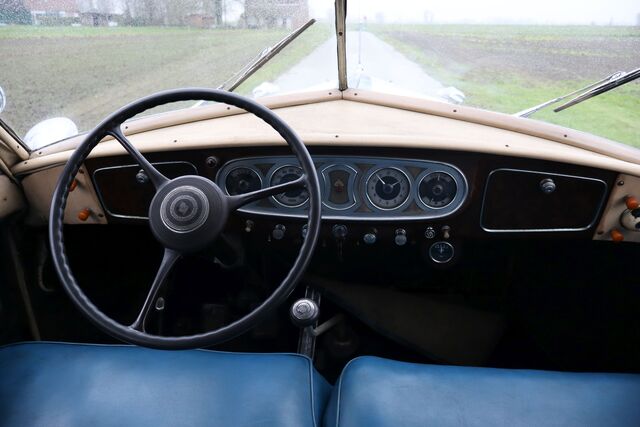
The design itself took inspiration from the sleek, elegant lines of ships, making the car look more like a luxury vessel than a traditional automobile. The body featured a sleek bow, portholes, and even mooring cleats—details that evoked the opulence and allure of maritime luxury. Additionally, a mast was placed at the rear of the vehicle, proudly displaying Réard’s colors, and further emphasizing the vehicle’s ship-like aesthetic. On October 1, 1948, the car was christened with champagne in a ceremony that followed the finest naval traditions.
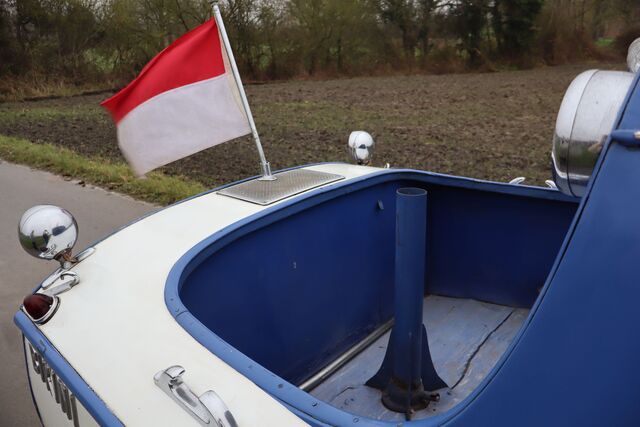
Public Reception and Promotional Tours
Once completed, the Yacht Car became more than just an engineering marvel; it became a symbol of Réard’s brand and the bikini’s promotion. In June 1949, the car was showcased at the prestigious Enghien-les-Bains Concours d’Élégance, an event that was perfect for this extravagant and unique creation. But this was only the beginning of the Yacht Car’s public life. Throughout the late 1940s and 1950s, the car toured France and Europe, particularly during events such as the Tour de France cycling race and other beach-centric promotions
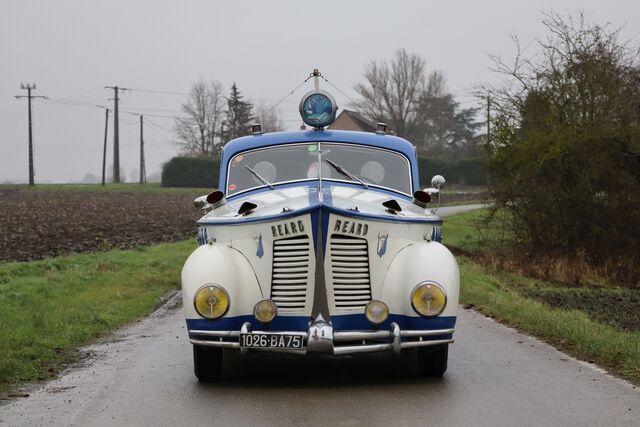
The car, with its eye-catching design and the bikini-clad models riding in the back, made a lasting impression wherever it went. In fact, the vehicle’s promotion of the bikini was so effective that it won the Grand Premier Prix de la Coupe from the French Federation of Advertising. The unique combination of a luxurious automobile and the revolutionary swimsuit captured the imagination of the public, ensuring that both the car and the bikini became intertwined in the cultural landscape of post-war Europe.
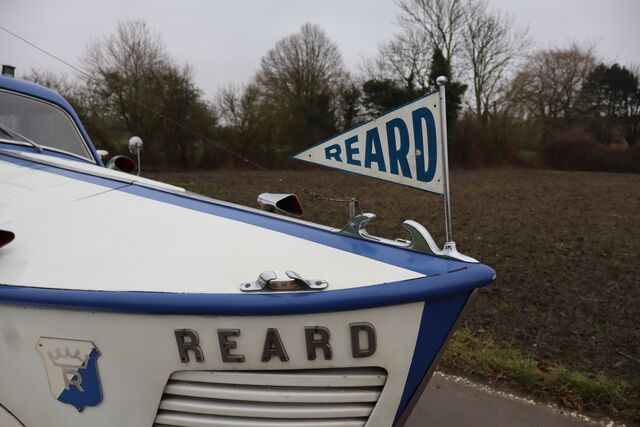
Preservation and Ownership History
After years of making waves on European roads, the Yacht Car remained in the hands of Louis Réard until 1976. At that point, it was purchased by Jacques Vincent, a renowned car collector from Var, who kept the car in his collection for several decades. Despite numerous purchase inquiries over the years, the car remained with Vincent until 2023, when it finally entered the market.
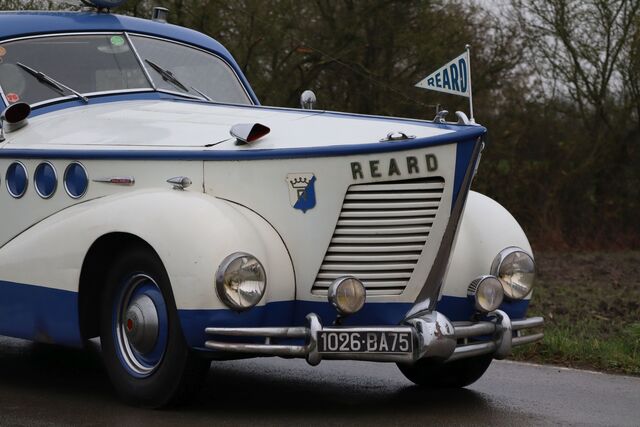
During its time under Vincent’s ownership, the car became a rare treasure, kept out of the public eye except for a brief appearance at the 1987 Retromobile Show in Paris. Since then, it had remained largely unseen, making it one of the most well-preserved examples of automotive history from that era.

What makes the Yacht Car particularly fascinating is its preservation. Despite the passage of more than seven decades, the car retains many of the original features that made it so iconic. From its luxurious, ship-inspired bodywork to its upgraded 302-horsepower engine, the Yacht Car is as much a work of art as it is a vintage automobile.
The Legendary Packard Today

Now, after more than 75 years, the Yacht Car presents an unparalleled opportunity for collectors and automotive enthusiasts. The car has been recently restarted, though it will require a full service before taking to the roads again, perhaps even making a return to the Tour de France. Its condition is remarkably well-preserved, making it one of the most desirable vintage cars for collectors who seek not just a car, but a piece of history.
For those fortunate enough to acquire this automotive masterpiece, the Yacht Car is more than just a car—it is a rare museum-quality vehicle that represents a unique fusion of fashion, art, and engineering. The opportunity to own such a piece of automotive history is a once-in-a-lifetime chance, with its rarity and significance cementing its place in the legacy of luxury vehicles.
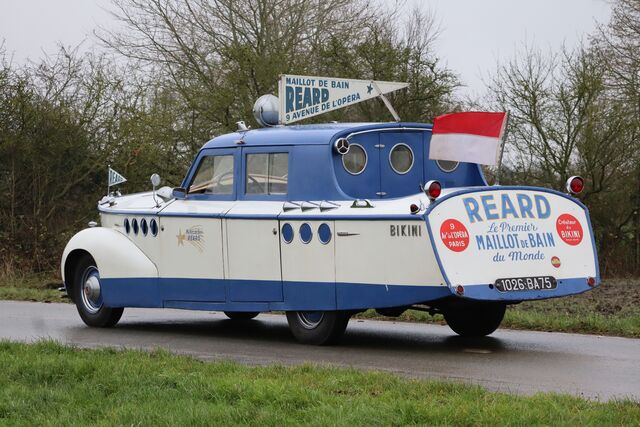
Conclusion
The Yacht Car, created by Louis Réard and built on a 1937 Packard Super Eight chassis, is a remarkable example of innovation and design from the post-war era. More than just a promotional tool for the bikini, it stands as a testament to the blending of automotive craftsmanship and cultural influence. With its distinctive ship-like design, luxurious features, and fascinating history, the Yacht Car has left an indelible mark on both the world of vintage cars and fashion.
Now, as it becomes available to the public for the first time in decades, the Yacht Car offers a rare opportunity for collectors to own a piece of history. For those who appreciate the extraordinary, the Yacht Car is a timeless reminder of the creativity and vision that defined the post-war era. It is not just a car; it is a symbol of the freedom and innovation that continue to shape the world of vintage automobiles today.
Video
Watch this video to discover the top 10 strangest cars ever made and the bizarre designs behind them!
